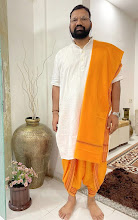Christian Meditation
Christian meditation is rooted in the Bible. In fact, the Bible commands us to meditate. In Joshua 1:8, God says to meditate on His word day and night so we will obey it. The psalmist says "his delight is in the law of the Lord, and in His law he meditates day and night" (Psalm 1:2). Actually, the Bible mentions meditate or meditation 20 times.
In the Old Testament there are two primary Hebrew words for meditation: Haga, which means to utter, groan, meditate, or ponder; and Sihach, which means to muse, rehearse in one's mind, or contemplate. These words can also be translated as dwell, diligently consider, and heed.
History
One form of Christian meditation that has been used by believers since at least the fourth century AD is the lectio divina. It has been traditionally used in monastic religious orders and is enjoying a resurgence today. Lectio divina means "sacred reading" and has four stages: lectio (reading), meditatio (discursive meditation), oratio (affective prayer), and contemplatio (contemplation). In the lectio (reading) stage, one finds a passage and reads it deliberately. The next stage, meditatio (discursive meditation), is where one ponders the text. In the oratio (affective prayer) stage, one talks to God about the reading, asking Him to reveal the truth. In the final, contemplatio (contemplation) stage, one simply rests in the Lord's presence.
Today, meditation is generally seen as a practice of the New Age movement. This comes primarily from its association with Transcendental Meditation. Transcendental Meditation (TM) was developed by the Maharishi Mahesh Yogi of the Hindu religion and is steeped in Hindu philosophy. The "yogi" in the TM founder's name indicates his status in Hinduism. Courts in the
